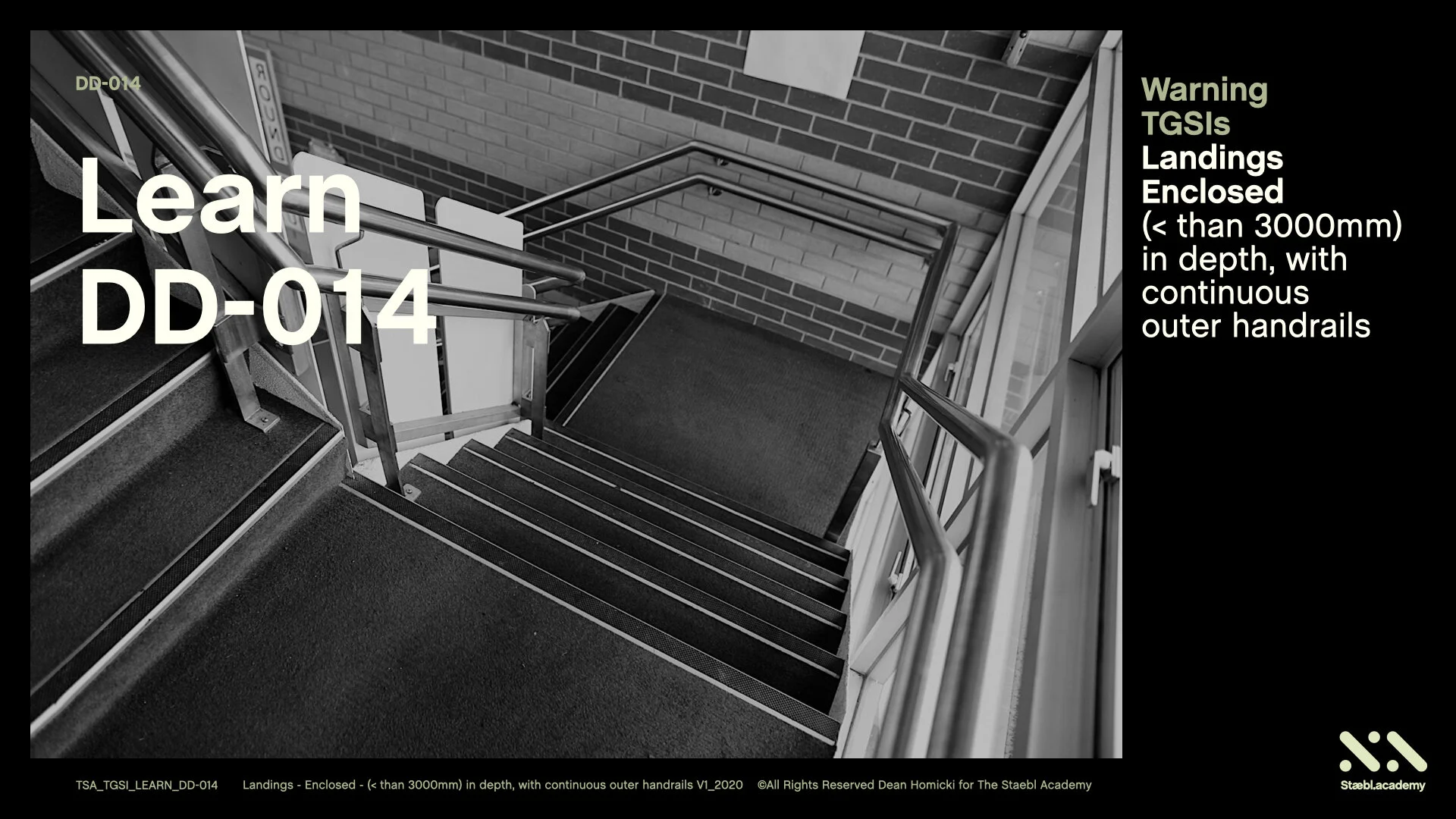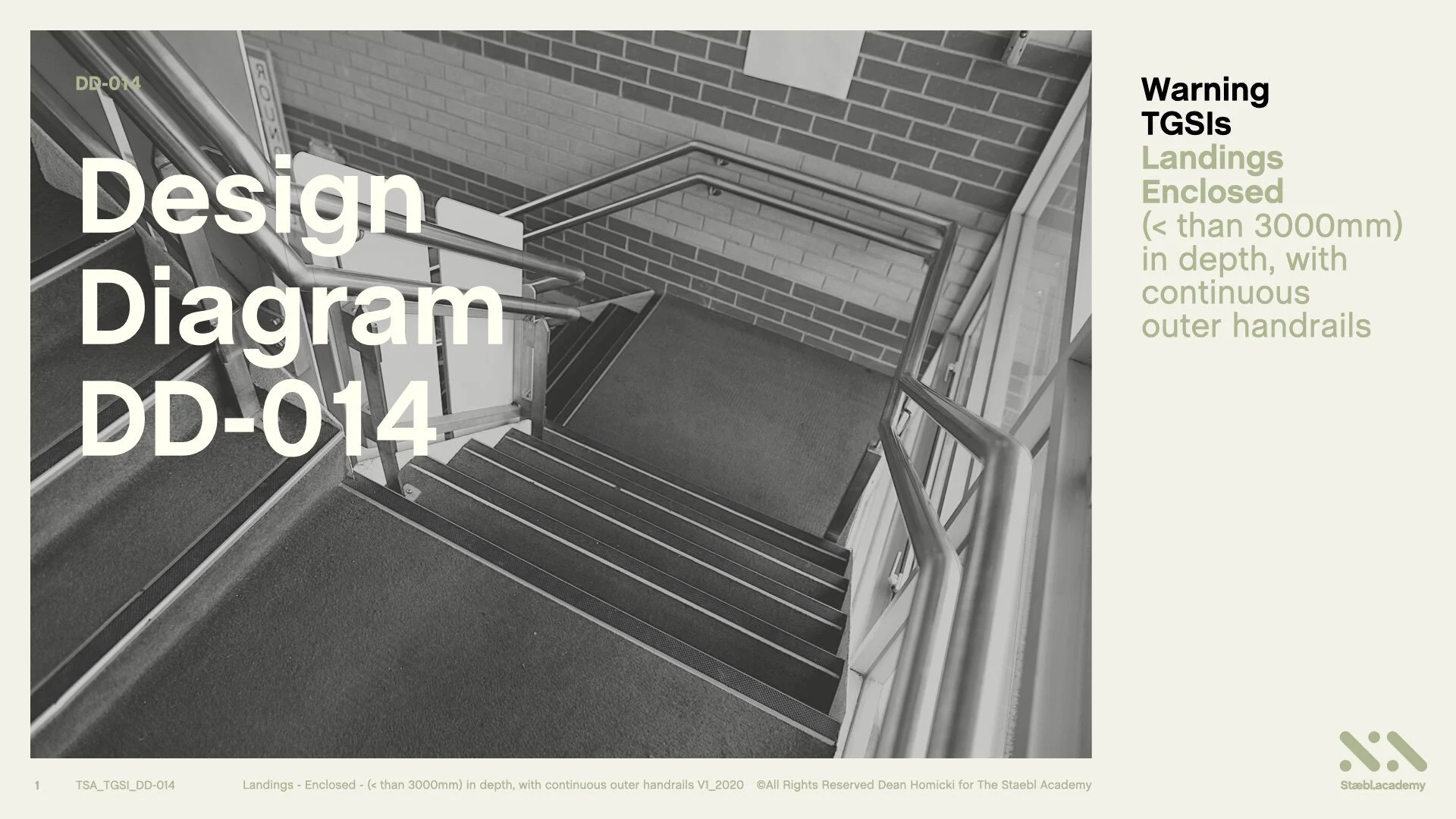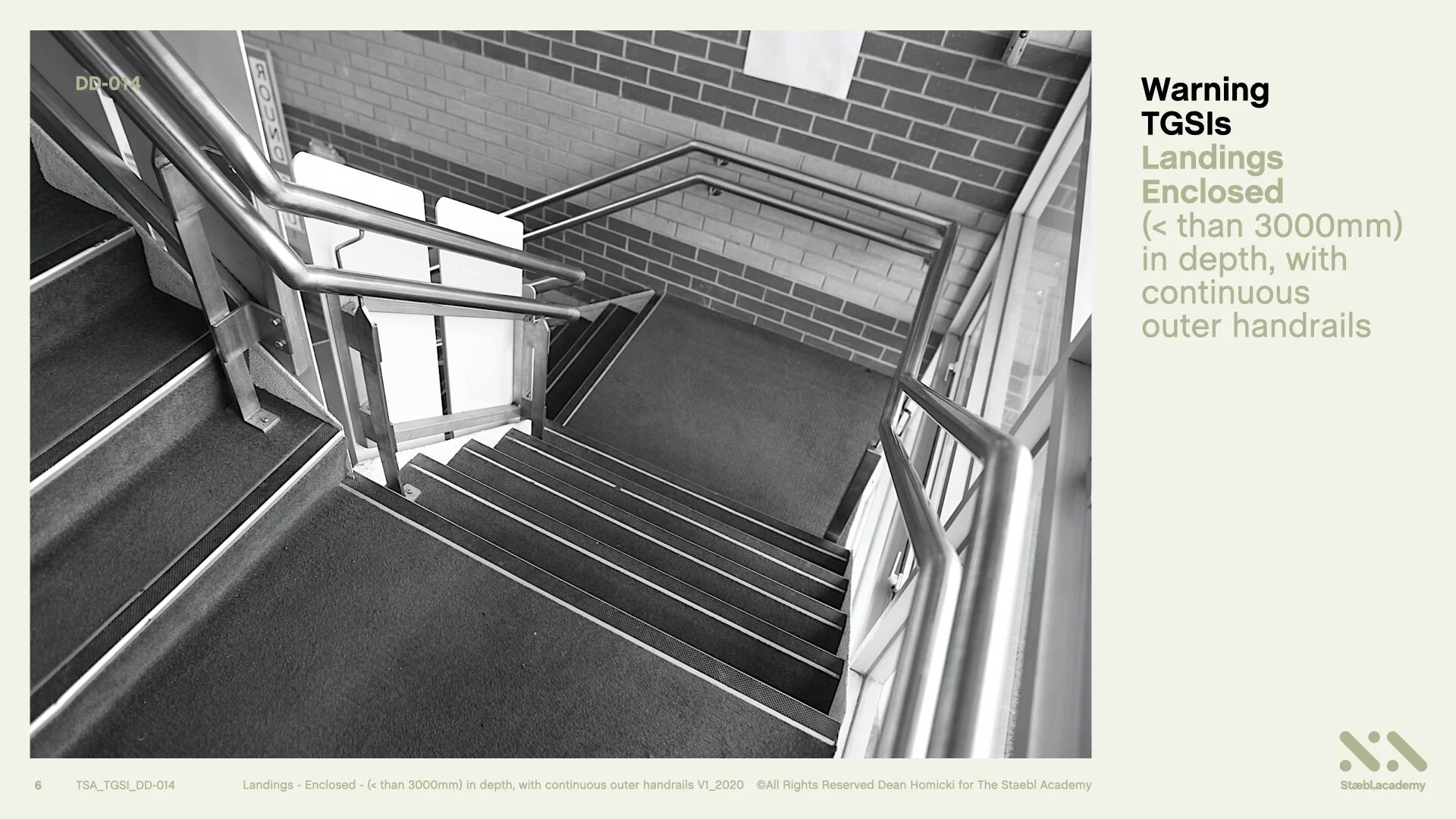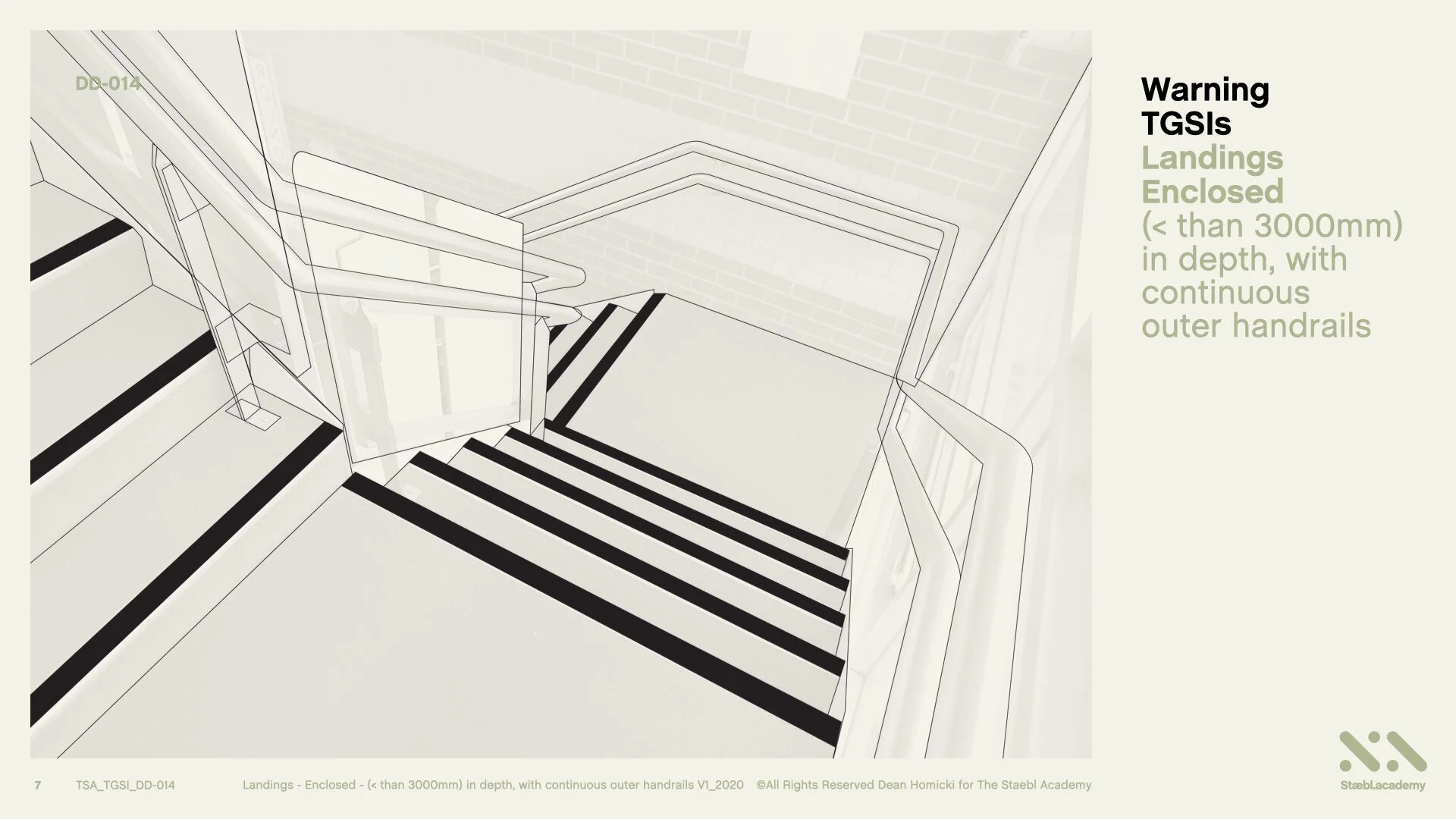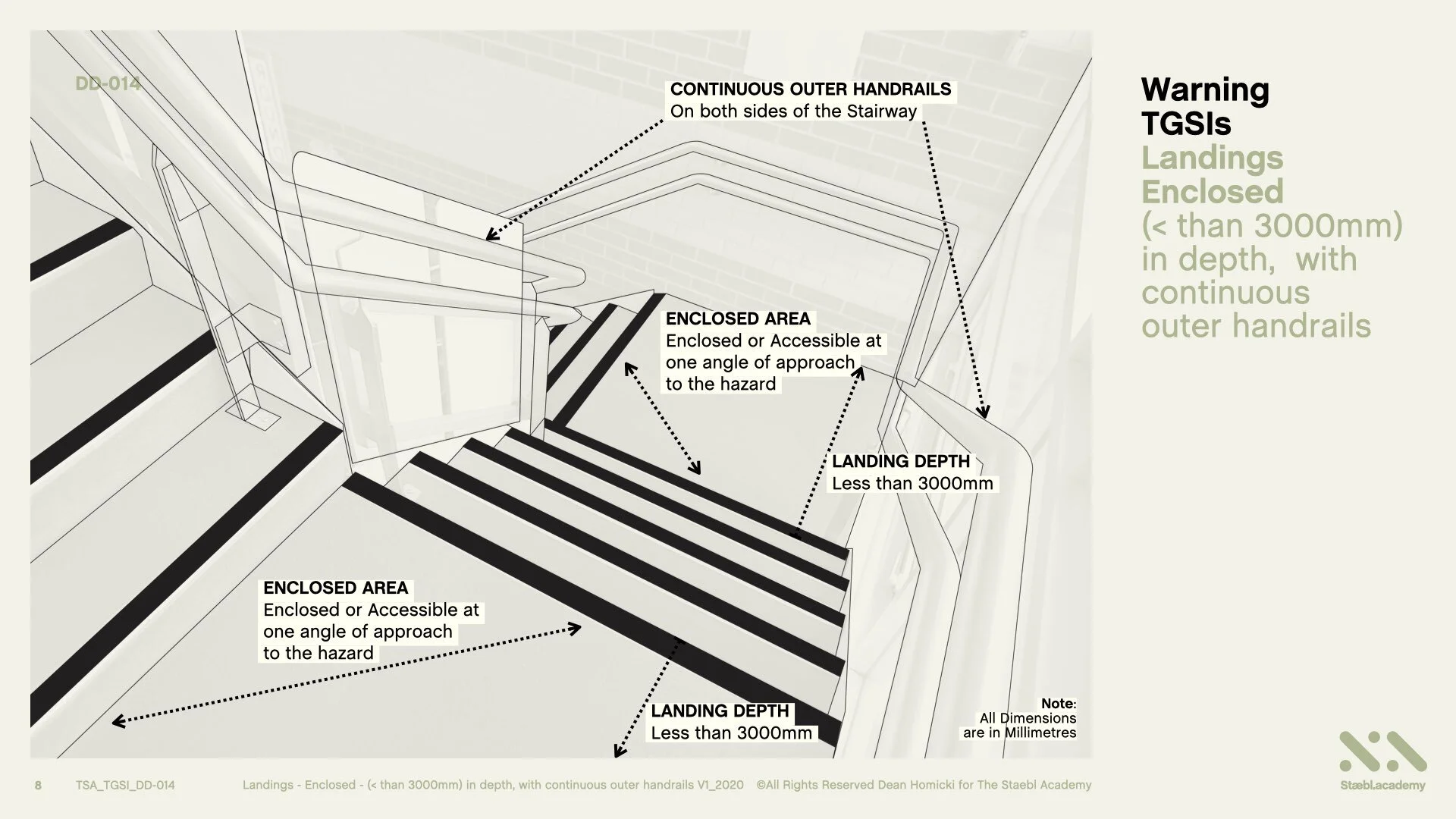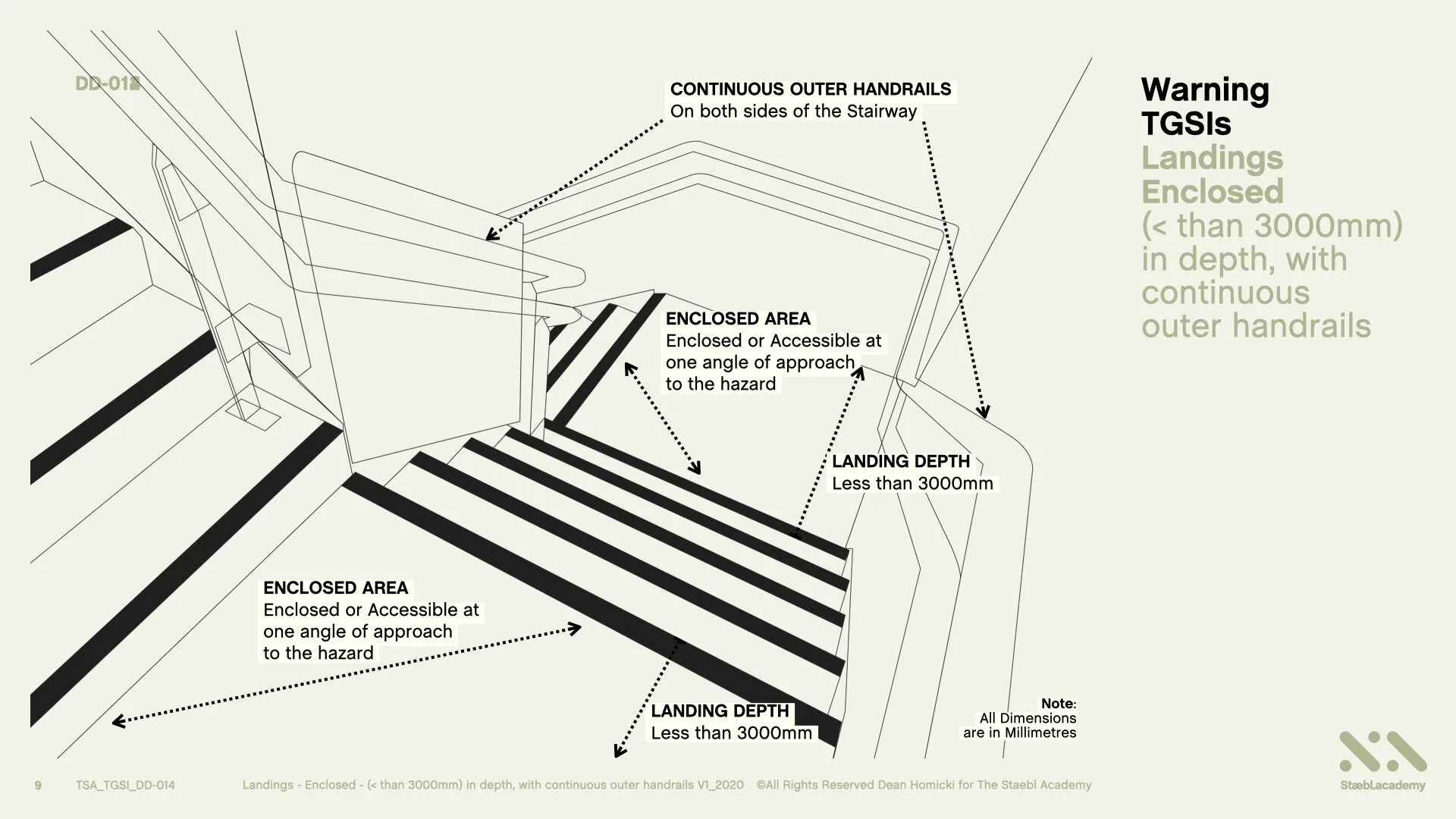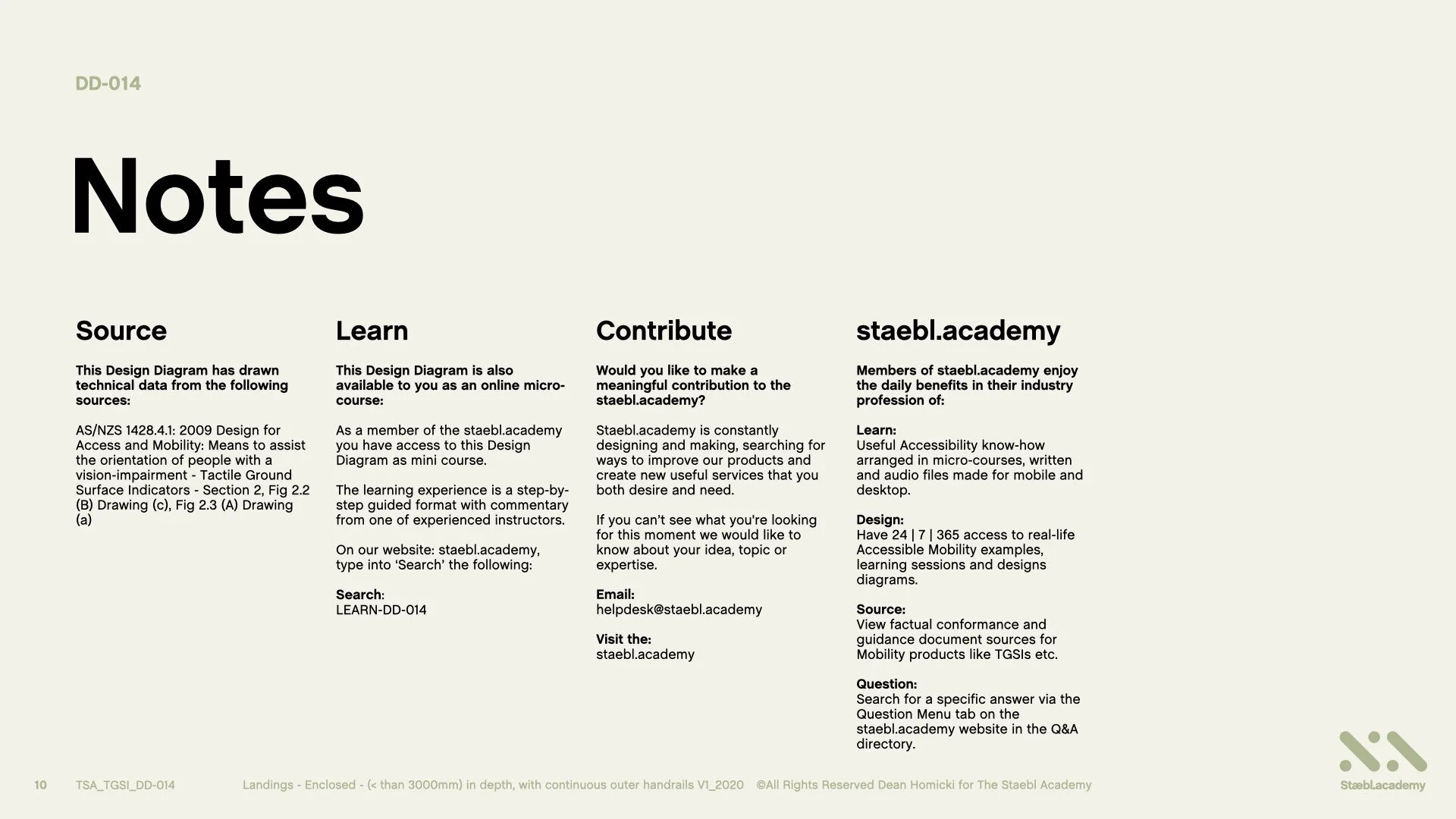Landings- Enclosed (< than 3000mm) in depth, with continuous outer handrails
Course: DD-014 | Length: 3:52 mins | Instructor: Dean Homicki
Chapters
00:28 - Learning Overview
01:30 - Learning Session
02:07 - Let’s Begin
03:12 - Learning Resources
Transcript
This learning session will cover the use of Warning TGSIs on a:
Stairway with Enclosed Landings, less than 3000 mm in depth, with Continuous outer handrails.
Welcome to staebl.academy TGSI Design Diagram 014. I’m Dean Homicki and I’ll be your guide for this course.
Learning Overview
Let’s review one type of use with TGSIs on enclosed Landings on Stairway
This particular Stairway has Continuous outer handrails and the landings are less than 3000 mm in length. Let’s extract what the Australian TGSI Standard requires of the situation.
When a Stairway or Ramp, has one or more ENCLOSED landings, Less than 3000 mm in depth, with Continuous outer handrails, Warning TGSIs are not required on Enclosed Landings.
Here is a real-life situation of a Stairway with two ENCLOSED landings. The Landings are less than 3000 mm in depth and have Continuous outer handrails.
We are going to now convert this image it into a perspective line drawing and view why TGSIs have not been used in this situation.
Here’s the line drawing of the image.
Learning Session
How to use TGSIs in this situation.
In this example, TGSIs have not been used on the Stairway landings because of the depth of each landing and the use of Continuous outer handrails.
However, TGSIs have been installed at the top of the Stairway with an open landing, and at the bottom of the stairway with an open landing.
For the orientation of persons who are blind or vision impaired, applying this knowledge enables us to determine how to use TGSIs and conform to the Normative and Informative Guidelines of the Australian TGSI standards.
Let’s Begin
On each landing of this Stairway, we have enclosed areas that are only accessible from one angle of approach.
And these landings are less than 3000 mm in their depth.
And, there are continuous or (unbroken), outer handrails on both sides of the stairway. Because there are continuous outer handrails on both sides of the stairway that continue for the full trafficable length of the stair, and, each landing on the stairway is less than 3000 mm in depth, TGSIs are not required to be installed in accordance with the Australian TGSI Standard.
However, Warning TGSIs are required at the Start and Finish (or the Top and Bottom) of the stairway.
And here is a real-life TGSI application once more.
Learning Resources
That’s the conclusion for Warning TGSIs, on a Stairway with enclosed Landings, less than 3000 mm in depth, with continuous outer handrails.
You can also access this course as a concise series of design diagrams in the resource section of our website staebl.academy/design. To access this resource now, click on the link below this video.
Thanks for joining me here at the staebl.academy. I look forward to guiding you through another learning session in the near future. Bye for now.
Listen
Click/Tap the audio player below to listen to the written transcript of this design session as an audible version. This is a streamed broadcast from the Staebl.academy site.
Diagrams
Click/Tap on an image from this learning session to view it as a larger picture. You will then be able to scroll through each individual design diagram in this slide-deck for a closer inspection.
Sources
TSA-TGSI-LEARN-DD-014 - This staebl.academy course module has drawn information from the following sources:
AS/NZS 1428.4.1: 2009 Design for Access and Mobility: Means to assist the orientation of people with a vision-impairment - Tactile Ground Surface Indicators - Section 2, Fig 2.2 (B) Drawing (c), Fig 2.3 (A) Drawing (a)


